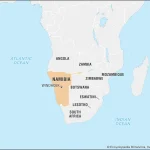
Biden Proposes Three-Phase Plan to End Israel-Hamas War

President Joe Biden, on Friday, outlined a three-phase plan proposed by Israel to Hamas that is aimed at releasing hostages and ending the nearly eight-month-old Israel-Hamas conflict.
The United States President said the first phase includes a six-week cease-fire, Israeli withdrawal from populated Gaza areas, and the release of hostages. These hostages include women, the elderly, and the wounded in exchange for hundreds of Palestinian prisoners.
American hostages would also be freed at this stage, and the remains of those killed would be returned to their families. Humanitarian aid would increase, with 600 trucks entering Gaza daily.
In the second phase, all remaining hostages, including male soldiers, would be released, and Israeli forces would withdraw from Gaza. Biden noted that “as long as Hamas lives up to its commitments, the temporary cease-fire would become, in the words of the Israeli proposal, ‘the cessation of hostilities permanently.’”
The third phase involves the major reconstruction of Gaza, which was devastated by the conflict. The proposal, spanning four-and-half pages, was sent to Hamas on Thursday.
The U.S. congressional leaders on Friday invited Israeli Prime Minister Benjamin Netanyahu to speak at the U.S. Capitol. Although, no date has been set for the speech.
Nonetheless, Biden acknowledged the complex nature of the proposal, saying that there were many “details to negotiate,” particularly regarding the ratio of hostages to prisoners to be released in the next phase.
Biden’s comments followed the Israeli military’s expansion into Rafah in southern Gaza. The POTUS averred that it was a critical moment. He urged Hamas to show its commitment to a cease-fire.
Meanwhile, in a statement after Biden’s speech, Netanyahu’s office said he had authorised Israel’s hostage negotiation team to find a way to release the remaining hostages.
However, Israel maintains that “the war will not end until all of its goals are achieved, including the return of all our abductees and the elimination of Hamas’ military and governmental capabilities.”
About The Author
Related Articles
Burkina Faso Grants Broadcast Frequency to AES Radio
Burkina Faso’s Superior Council of Communication has approved the allocation of a...
ByWest Africa WeeklyDecember 19, 2025Mass Layoffs Cast Shadow Over Guinea’s Simandou Mine as Exports Begin
Guinea has begun exporting iron ore from the long delayed Simandou project,...
ByWest Africa WeeklyDecember 19, 2025Ghana Arrests Nigerians for Cybercrime
The Minister for Communications, Digital Technology and Innovation, Ghana, Hon. Samuel Nartey...
ByJoshua ChuwangDecember 17, 2025Burkina Faso, Mali and Niger Retain GIABA Role Despite ECOWAS Exit
The Economic Community of West African States has confirmed that Burkina Faso,...
ByWest Africa WeeklyDecember 17, 2025











